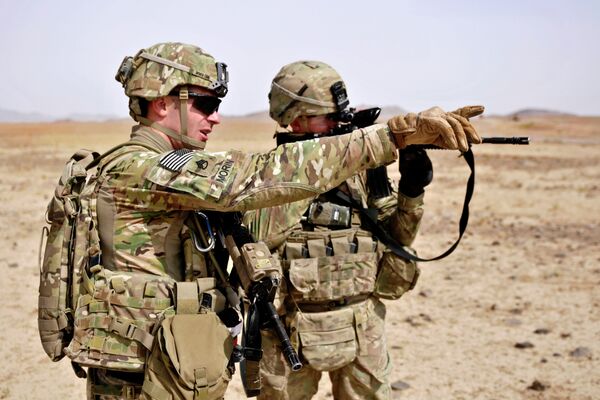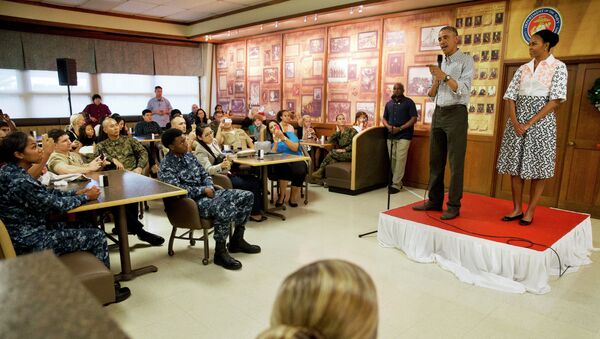Speaking to soldiers and their families at a Marine Corps base in Hawaii on Thursday, Obama ensured that the U.S. will be pulling out of its operations.
“We’ve been in continuous war now for over 13 years. Next week we will be ending our combat mission in Afghanistan,” the president said.
“Because of the extraordinary service of the men and women in the Armed Forces, Afghanistan has a chance to rebuild its own country. We are safer. It’s not going to be a source of terrorist attacks again.”
Service members welcomed the commander-in-chief’s announcement with shouts of “Hurrah!”
What wasn’t announced on Thursday by the president was a recent secret order, which actually looks to extend the U.S. military’s mission in the country.

According to the initial withdrawal plan, nearly ten thousand U.S. troops were to stay in Afghanistan in a non-combat role to train local security forces and provide them with technical assistance without engaging in direct fights with the Taliban.
However, according to the New York Times, a month ago the Obama administration decided that the situation in Afghanistan is deteriorating so rapidly that this might not be enough.
Insurgents have been taking control of Afghan provinces left behind by International Security Assistance Forces (ISAF), mostly consisting of US servicemen. And the Afghan army has often proven themselves unable to resist Taliban offences.
The Times writes that the new plan — effectively an expanded mission — gives American forces permission to “carry out missions against the Taliban and other militant groups threatening American troops or the Afghan government.”
It also allows American jets, bombers and drones to support Afghan troops in combat, as several administration, military and congressional officials with knowledge of the decision told the newspaper.
Obama’s order comes amidst a long tug-of-war within his administration over his promise to end the war in Afghanistan and the Pentagon’s demands to allow troops to successfully fulfill their remaining mission in the war-torn country.
During a White House meeting with senior national security advisers, some of Obama’s top civilian aides argued that “American lives should not be put at risk next year in any operations against the Taliban, and that they should have only a narrow counterterrorism mission against Al Qaeda.”
Military officials at the Pentagon and in Afghanistan, on the other hand, have urged the President to define the mission more broadly to allow American troops to attack the Taliban, the Haqqani network and other militants if intelligence revealed that insurgents were threatening American forces in the country.

Two major issues that shifted the debate over the nature of the U.S.’ military’s role on foreign soil in 2015 are ISIL’s advancement across northern Iraq and the collapse of the Iraqi Army, both leading to criticism of the president for a military pullout of Iraq that left Iraqi troops ill-prepared to protect their soil.
Republican and even some Democratic lawmakers have similarly criticized Obama’s Afghanistan strategy, saying it adheres to an overly compressed timeline that would hamper efforts to train and advise Afghan security forces — potentially leaving them vulnerable to attack from Taliban fighters and other extremists in the meantime.
According to the December 31 pullout agreement, half of the 9,800 American troops would leave Afghanistan, while the rest will be consolidated in Kabul and Bagram, set to leave by the end of 2016.
The timing of such a withdrawal would allow the outgoing U.S. president to count ending the Afghan war among his accomplishments before leaving office.




